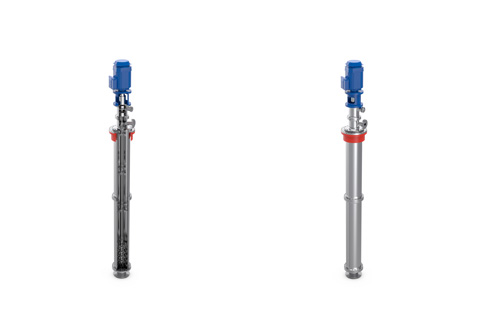Wärtsilä introduces new fuel pump for efficient and environmentally sustainable gas operations
 The latest addition to Wärtsilä’s portfolio of gas pumps has been introduced. The new Wärtsilä Svanehøj ECA Fuel Pump (EFP) has been developed in close cooperation with designers of liquefied natural gas (LNG) fuel systems to support gas fuelled engines that achieve greater efficiency.
The latest addition to Wärtsilä’s portfolio of gas pumps has been introduced. The new Wärtsilä Svanehøj ECA Fuel Pump (EFP) has been developed in close cooperation with designers of liquefied natural gas (LNG) fuel systems to support gas fuelled engines that achieve greater efficiency.
The new Wärtsilä pump offers a number of advantages, including having no tank connections below liquid level, no electrical components inside the tank, and hardly any contribution to the generation of boil off gas. Having less heat and pressure build up in the fuel tank makes the new pump very safe, while in harsher operating conditions it also maintains the pressure, thereby ensuring a continuous gas flow to the LNG fuelled engine.
The Wärtsilä Svanehøj ECA Fuel Pump is designed to be compatible with Wärtsilä’s LNGPac fuel bunkering and supply system, and in accordance with regulations covering vessels operating in Emission Control Areas (ECAs). The pump can also be used with other types of fuel, such as ethane and methanol.
“This new addition to our pump portfolio is one more important enabler for the use of LNG as a safe and viable marine fuel. The design is based on the company’s huge competence and depth of experience in pump technology, and will ensure a steady, safe, and reliable supply of gas to the engine regardless of weather or thermal conditions. Needless to say, it meets all the latest environmental and efficiency requirements,” says Henrik Sorensen, Managing Director, Wärtsilä Svanehøj.
There are currently more than 5000 Wärtsilä Svanehøj deepwell gas pumps in operation around the globe. This latest version is designed for a service life of at least 25,000 operating hours or five year service intervals. It also has a contingency in place should something unexpected happen, whereby the pump can be serviced under Wärtsilä’s three service area concept, which enables access to the motor, bearing and pump – even with gas pressure in the tank. Importantly, the electric motor is situated outside the fuel tank to eliminate excess heat and pressure. Conventional pumps with the motor installed inside the fuel tank transfer as much as 70 percent of the electrical energy as heat to the LNG.






